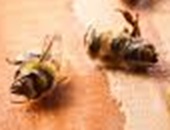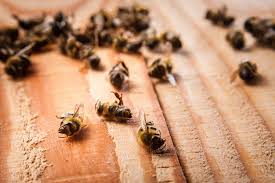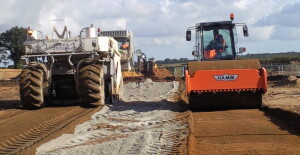In June 2024, Dawn Lalonde, a beekeeper in northern Ontario noticed a sudden die-off of about a million bees. The bee die-off affects much more than the amount of honey she can collect from her hives. Without bees, local crops and orchards do not get adequately pollinated, leading to lower yields. This is but one recent example of a type of risk coming into new prominence in business and economics: nature risk.
Nature risk, the loss of things in the world not created or domesticated by humans, affects businesses and economies directly, by impacting operations such as lack of pollination, or indirectly, by affecting society in a way, such as food shortages, that then increases market risk, which in turn increases systemic geopolitical risk.
Taking action to conserve and restore nature should be a global priority. What, if anything, can be done to prevent loss of nature? The answer in short, is to “follow the money.” If the impact of nature loss on financial portfolios is large, then corporations will start to pay attention. The World Economic Forum (WEF) published a report in 2020, “Nature Risk Rising,” that estimated “more than half of the world’s total GDP… is moderately or highly dependent on nature and its services, and therefore exposed to risks from nature loss.”
On June 27, 2024, Maxine Nelson, Senior Vice President, GARP Risk Institute, posted an article about nature risk that builds on this earlier work.
Her intention is clear: “As more leading firms identify nature-related risks in their portfolios, we examine how they’re doing it and how they’ve progressed so far.” The article appears on the website of the Global Association of Risk Professionals (GARP).
For nature risk, the Taskforce on Nature-related Financial Disclosures (TNFD), a global organization of senior executives from financial institutions and corporations, published a set of recommendations in September 2023. It recommends disclosures around the four pillars of governance, strategy, risk and impact management, and metrics and targets.
Key to the TNFD is the Global Biodiversity Framework (GBF), which aims to address the crisis of biodiversity loss around the globe. This organization has the rallying cry “30 by 30” which means they want to ensure 30 percent of oceans, coastal areas, and inland waters are protected by 2030.
Ecosystem Services
Nelson refers often to the concept of ecosystem services. Japan’s century-old Norinchukin Bank , a cooperative bank serving thousands of agricultural, fishing, and forestry cooperatives, has done a deep dive into links between the different industrial sectors it lends to. It categorizes the ecosystem services that are relied on, and the corresponding source of natural capital. For instance, the industrial sector of construction requires an ecosystem service of soil stabilization, and the source of this is the natural capital asset we call soil.
The assessment of nature-related issues is done within the LEAP paradigm:
- Locate the interface with nature
- Evaluate the dependencies and impacts
- Assess material risks and opportunities
- Prepare to respond and report
Norinchukin Bank repeated this exercise for 10 industrial sectors, identifying 10 major ecosystem services, and 4 types of natural capital: water resources, atmosphere, biodiversity, and soil.
Quantifying Nature Risk
Nelson’s article uses a Sankey diagram to show the flow between industry sector, ecosystem service, and natural capital.
She gives examples of nature risk estimates from financial institutions that are defining nature risk for their portfolios: Toronto-based TD Bank, Rotterdam-based asset manager Robeco, Amsterdam-based ING Bank, and Norway’s sovereign wealth fund.
LEAP is one method; another method is ENCORE (Exploring Natural Capital Opportunities, Risks and Exposure). This is a free, online web-based tool that helps organizations explore their exposure to nature risk, developed by the UN Environment Programme Finance Initiative (UNEP FI).
A look at any one of Nelson’s examples, such as the TD Climate Action Plan 2023 Update, shows a responsible corporation seriously addressing an issue of dire concern to all.
As a parting thought, Nelson writes, “Measurement approaches have already been developed and leading firms have adopted them. … All firms are well advised to follow their example and understand the nature-related risks in their portfolio, so they can start being managed.”♠️
Click here to read Maxine Nelson’s full article on best practices of nature risk estimates.
Visuals in this posting are from the Backyard Beekeeping website, World Wildlife Fund (deforestation), and GARP. Permission pending.
Click here for GARP Risk Institute, the research and thought leadership arm of GARP.




